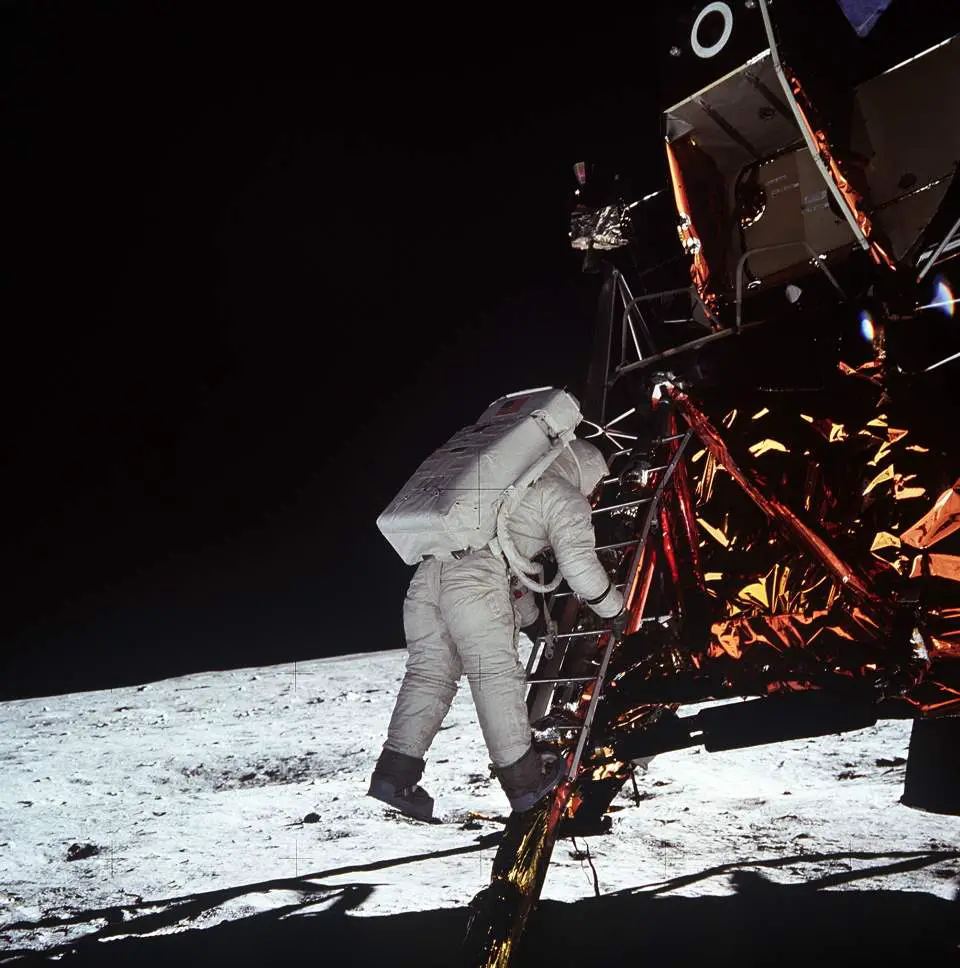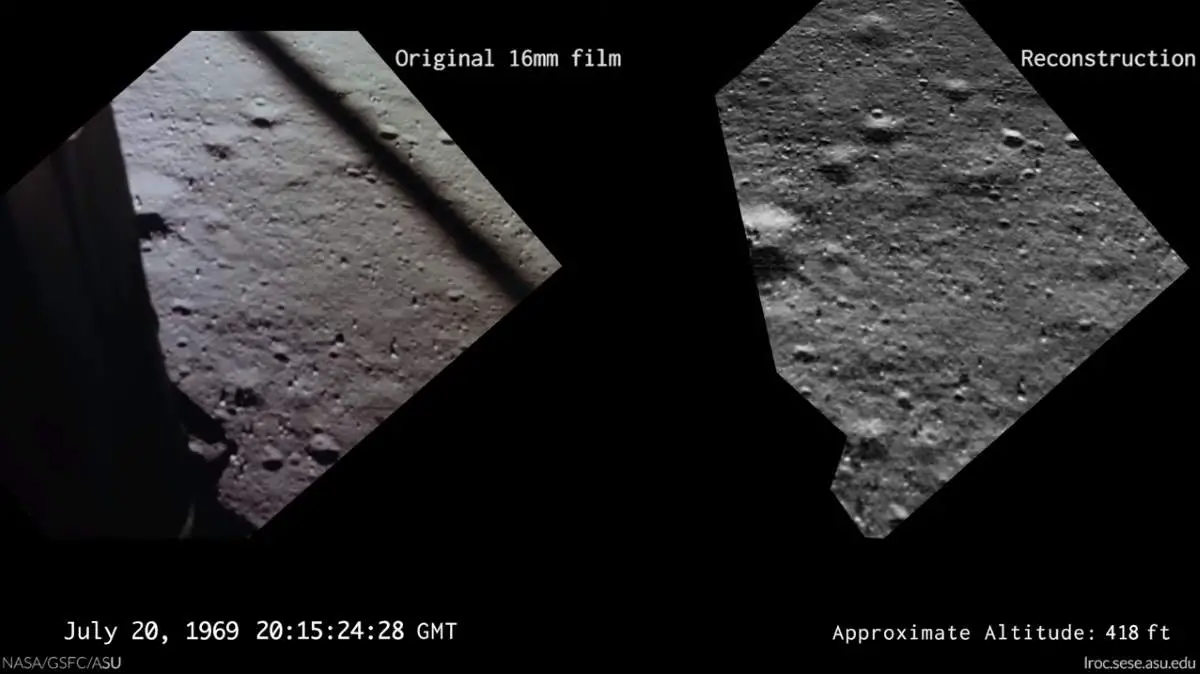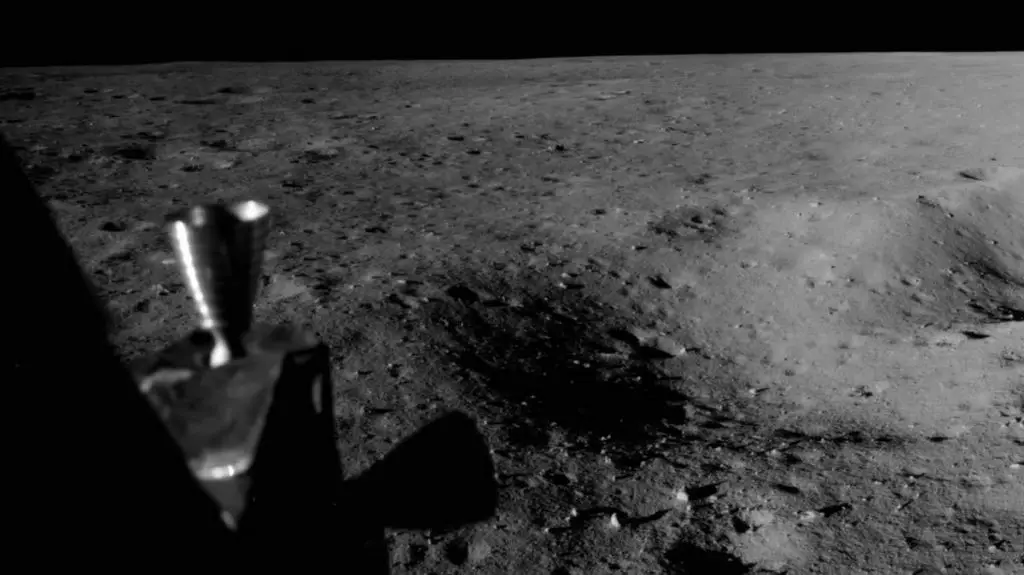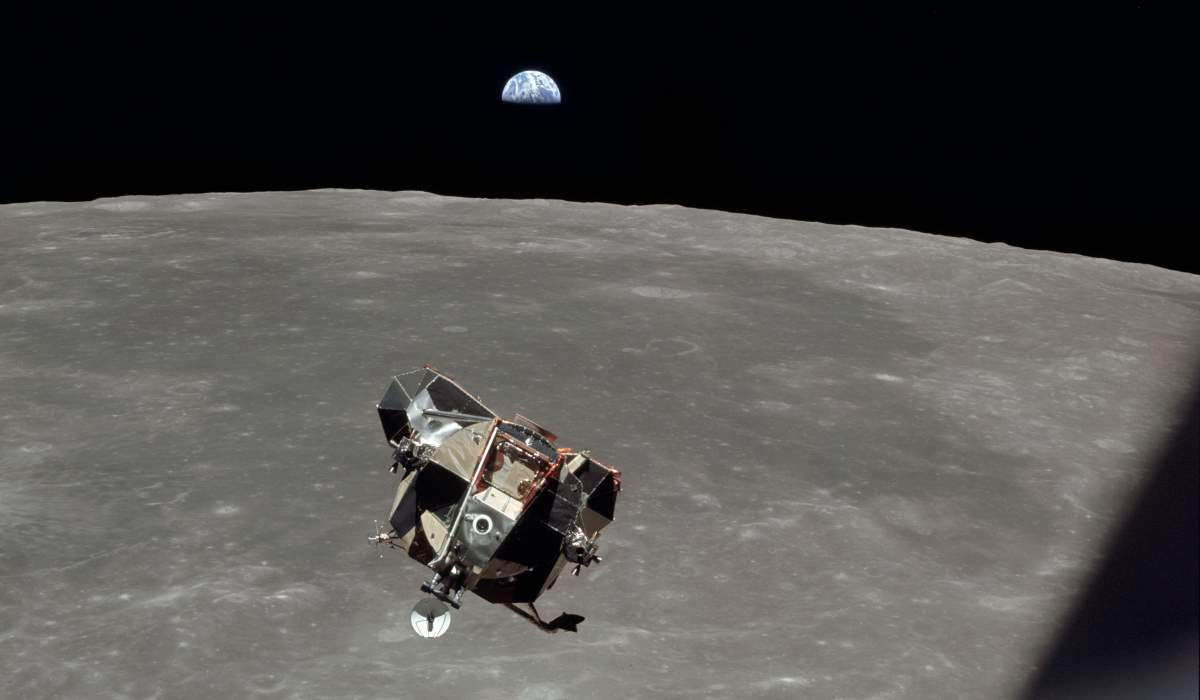“Tranquility Base here. The eagle has landed.” Neil Armstrong said so as the Apollo Lunar Module Eagle touched down on the lunar surface on Sunday, July 20, 1969, at 20:17 UTC.
The only visual record of the historic Apollo 11 lunar landing is from a 16mm time-lapse (6 frames per second) movie camera mounted in Buzz Aldrin’s window (right side of Lunar Module Eagle or LM). Due to the small size of the LM windows and the angle at which the movie camera was mounted, what mission commander Neil Armstrong saw as he flew and landed the LM was not recorded.
Now, the Lunar Reconnaissance Orbiter Camera (LROC) team reconstructed the last three minutes of the landing trajectory (latitude, longitude, orientation, velocity, altitude) using landmark navigation and altitude call-outs from the voice recording. The result is the video below, published by the Lunar Reconnaissance Orbiter Camera channel.
The Lunar Reconnaissance Orbiter (LRO) is a NASA robotic spacecraft currently orbiting the Moon. In operation since 2009, the Lunar Reconnaissance Orbiter Camera (LROC) is a system of three cameras mounted on the Lunar Reconnaissance Orbiter (LRO) that capture high-resolution photos of the lunar surface.
Last moments of the Moon Landing
Hours : Minutes: Seconds (mission time after the launch)
102:42:41 Charles Duke: Eagle, looking great. You’re Go. (Long Pause) Roger. 1202. We copy it.
Note: Charles Duke (born October 3, 1935) is an American former astronaut. As Lunar Module Pilot for Apollo 16 in 1972, he became the tenth and youngest person to walk on the Moon. He served as CAPCOM (Spacecraft Communicator) for Apollo 11.
102:43:01 Buzz Aldrin: 35 degrees. 35 degrees. 750. Coming down at 23 (feet per second).
102:43:07 Neil Armstrong (onboard): Okay.
102:43:07 Aldrin: 700 feet, 21 (feet per second) down, 33 degrees.
102:43:10 Armstrong (onboard): Pretty rocky area.
102:43:11 Aldrin: 600 feet, down at 19.
102:43:15 Armstrong (onboard): I’m going to…
102:43:16 Aldrin: 540 feet, down at…(LPD angle is) 30. Down at 15. (Pause)
102:43:26 Aldrin: Okay, 400 feet, down at 9 (feet per second). 58 (feet per second) forward.
102:43:32 Armstrong (onboard): No problem.
02:43:33 Aldrin: 350 feet, down at 4.
102:43:35 Aldrin: 330, three and a half down. (Pause)
102:43:42 Aldrin: Okay, you’re pegged on horizontal velocity.
102:43:46 Aldrin: 300 feet (altitude), down 3 1/2 (feet per second), 47 (feet per second) forward. Slow it up.
102:43:52 Aldrin: 1 1/2 down. Ease her down. 270.
102:43:58 Armstrong: Okay, how’s the fuel?
102:44:00 Aldrin: Eight percent.
When Armstrong looked outside, he saw that the computer’s landing target was in a boulder-strewn area just north and east of a 300-foot (91 meters) diameter crater (later determined to be West crater), so he took semi-automatic control. Armstrong considered landing short of the boulder field so they could collect geological samples from it, but could not since their horizontal velocity was too high. Throughout the descent, Aldrin called out navigation data to Armstrong, who was busy piloting Eagle.
102:44:02 Armstrong (onboard): Okay. Here’s a… Looks like a good area here.
102:44:04 Aldrin: I got the shadow out there.
102:44:07 Aldrin: 250 (feet altitude), down at 2 1/2, 19 forward. (Pause)
102:44:13 Aldrin: Altitude (and) velocity lights (on).
Armstrong found a clear patch of ground and maneuvered the spacecraft towards it. As he got closer, now 250 feet (76 meters) above the surface, he discovered his new landing site had a crater in it. He cleared the crater and found another patch of level ground.
102:44:16 Aldrin: 3 1/2 down, 220 feet, 13 forward. (Pause)
102:44:23 Aldrin: 11 forward. Coming down nicely.
102:44:25 Armstrong (onboard): Gonna be right over that crater.
102:44:24 Aldrin: 200 feet, 4 1/2 down.
102:44:26 Aldrin: 5 1/2 down.
102:44:29 Armstrong (onboard): I got a good spot (garbled).
102:44:31 Aldrin: 160 feet, 6 1/2 down.
102:44:33 Aldrin: 5 1/2 down, 9 forward. You’re looking good.
102:44:40 Aldrin: 120 feet.
Now 107 feet (33 meters) above the surface, Armstrong knew their propellant supply was dwindling and was determined to land at the first possible landing site.
102:44:45 Aldrin: 100 feet, 3 1/2 down, 9 forward. Five percent (fuel remaining). Quantity light.
They were now 100 feet (30 meters) from the surface, with only 90 seconds of propellant remaining. Lunar dust kicked up by the LM’s engine began to obfuscate his ability to determine the spacecraft’s motion. Some large rocks jutted out of the dust cloud, and Armstrong focused on them during his descent so he could determine the spacecraft’s speed.
102:44:54 Aldrin: Okay. 75 feet. And it’s looking good. Down a half, 6 forward.
102:45:02 Duke: 60 seconds (of fuel left before the ‘Bingo’ call).
102:45:17 Aldrin: 40 feet, down 2 1/2. Picking up some dust.
102:45:21 Aldrin: 30 feet, 2 1/2 down. (Garbled) shadow.
102:45:25 Aldrin: 4 forward. 4 forward. Drifting to the right a little. 20 feet, down a half.
102:45:31 Duke: 30 seconds (until the ‘Bingo’ call).
102:45:25 Aldrin: 4 forward. 4 forward. Drifting to the right a little. 20 feet, down a half.
102:45:31 Duke: 30 seconds (until the ‘Bingo’ call).
102:45:32 Aldrin: Drifting forward just a little bit; that’s good. (Garbled) (Pause)
102:45:40 Aldrin: Contact Light.
A light informed Aldrin that at least one of the 67-inch (170 cm) probes hanging from Eagle’s footpads had touched the surface a few moments before the landing and he said: “Contact light!” Armstrong was supposed to immediately shut the engine down, as the engineers suspected the pressure caused by the engine’s own exhaust reflecting off the lunar surface could make it explode, but he forgot. Three seconds later, Eagle landed and Armstrong shut the engine down. Aldrin immediately said “Okay, engine stop. ACA – out of detent.” Armstrong acknowledged: “Out of detent. Auto.” Aldrin continued: “Mode control – both auto. Descent engine command override off. Engine arm – off. 413 is in.”
102:45:43 Armstrong (onboard): Shutdown
102:45:44 Aldrin: Okay. Engine Stop.
102:45:45 Aldrin: ACA out of Detent.
102:45:46 Armstrong: Out of Detent. Auto.
102:45:47 Aldrin: Mode Control, both Auto. Descent Engine Command Override, Off. Engine Arm, Off. 413 is in.
102:45:57 Duke: (Reporting that Houston has received telemetry confirming engine shutdown and that they have heard Buzz’s transmission regarding address 413) We copy you down, Eagle.
102:45:58 Armstrong (onboard): Engine arm is off. (Pause) (Now on voice-activated comm) Houston, Tranquility Base here. The Eagle has landed.
Eagle landed at 20:17:40 UTC on Sunday, July 20 with 216 pounds (98 kg) of usable fuel remaining. The information available to the crew and mission controllers during the landing showed that the LM had enough fuel for another 25 seconds of powered flight before an abort without touchdown because it would have become unsafe, but post-mission analysis showed that the real figure was probably closer to 50 seconds. Apollo 11 landed with less fuel than the most subsequent mission.

Sources
- Apollo 11 on Wikipedia
- “This Month in NASA History: The Apollo 11 Eagle Landed” on appel.nasa.gov
- “Scientists reconstruct what Buzz Aldrin saw as he landed on the moon” on the Spaceflight Now website
- Lunar Reconnaissance Orbiter on Wikipedia
- “The First Lunar Landing” on the NASA History website
- Moon Landings: All-Time List [1966-2025] - February 2, 2025
- What Is Max-Q and Why Is It Important During Rocket Launches? - January 16, 2025
- Top 10 Tallest Rockets Ever Launched [2025 Update] - January 16, 2025


